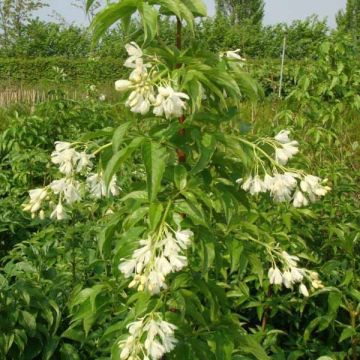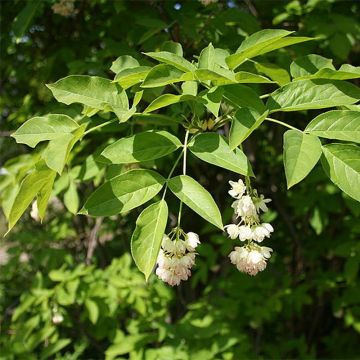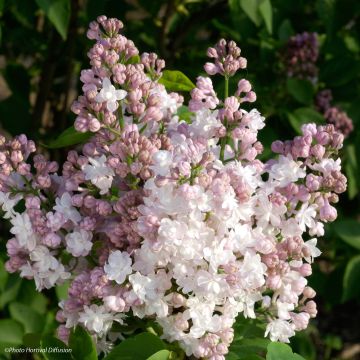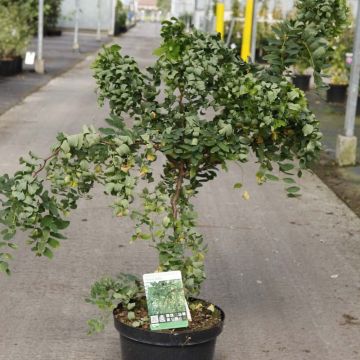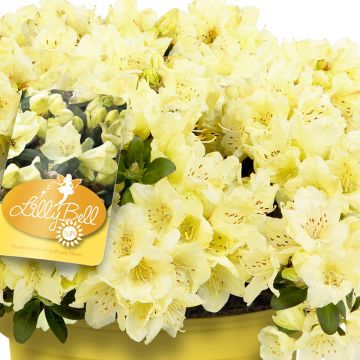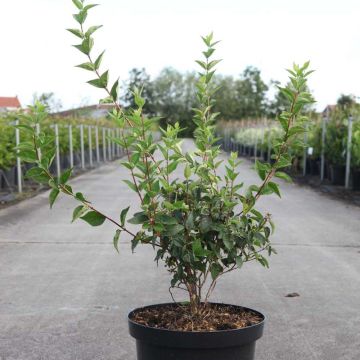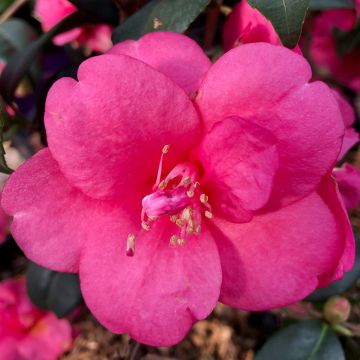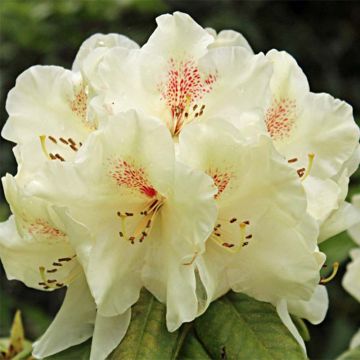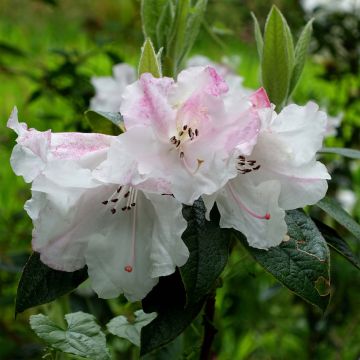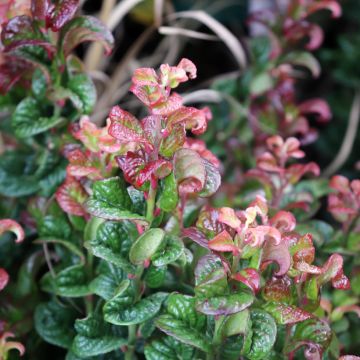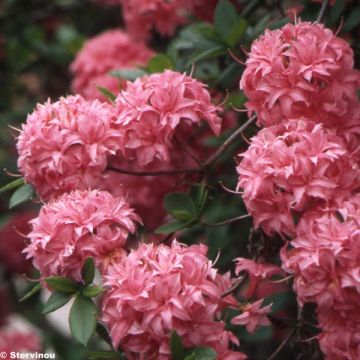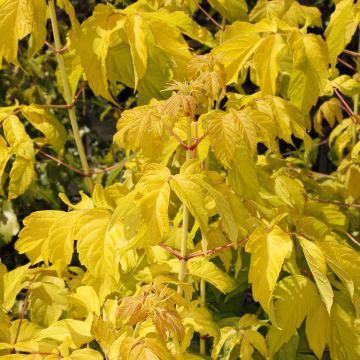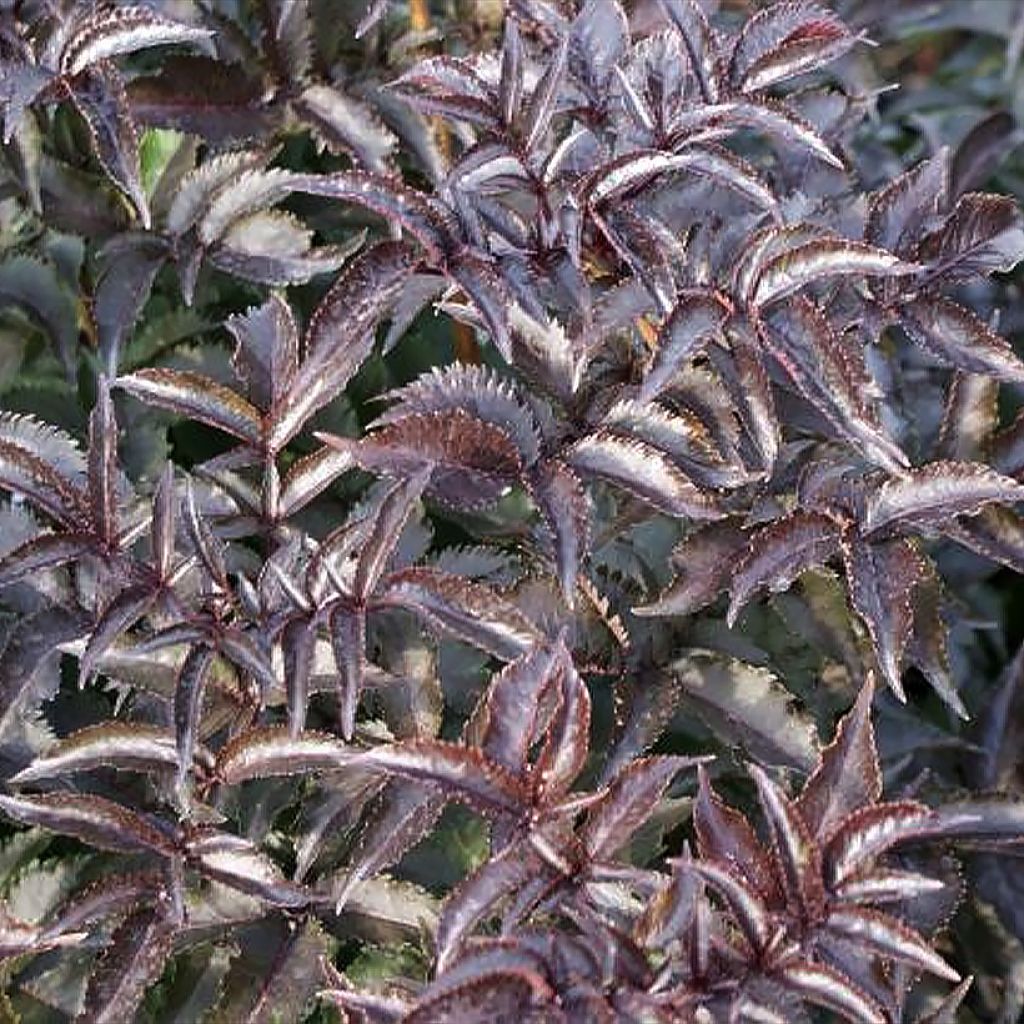

Staphylea colchica Black Beauty
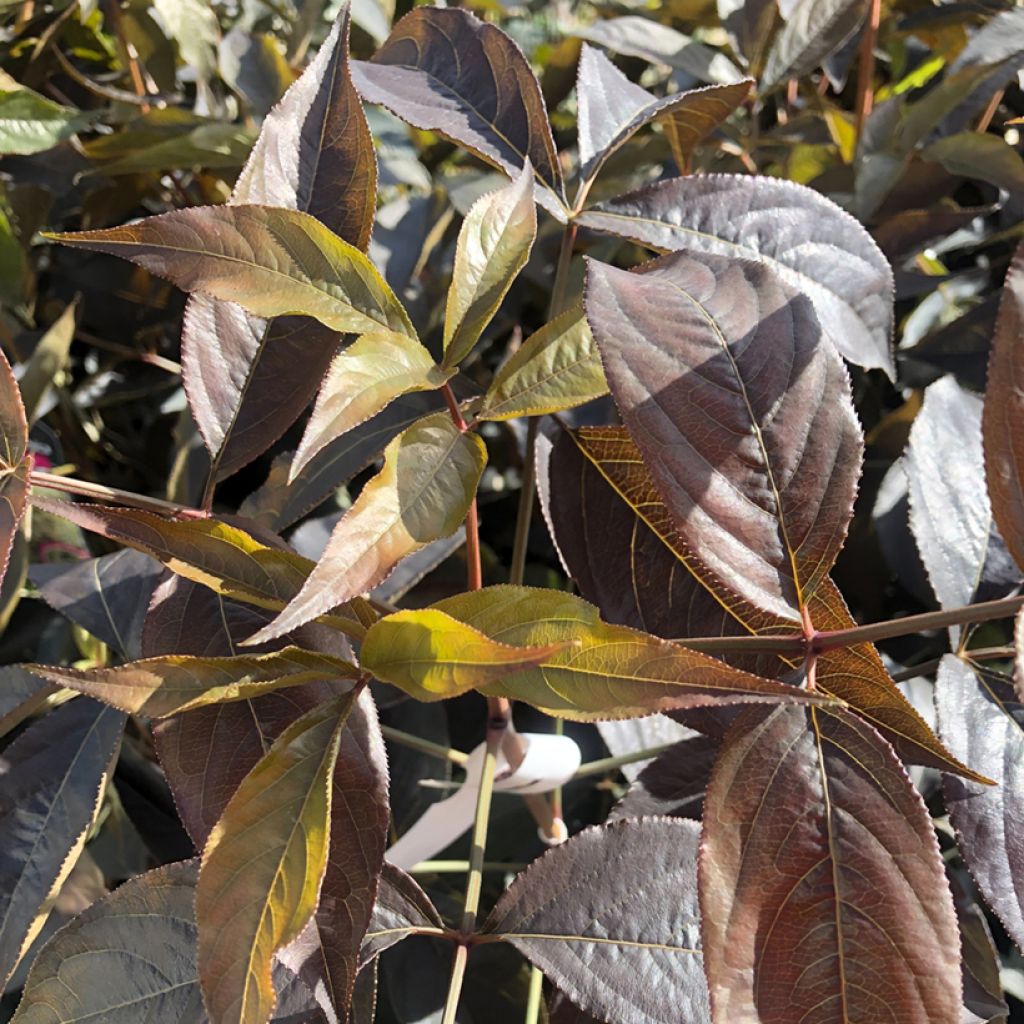

Staphylea colchica Black Beauty
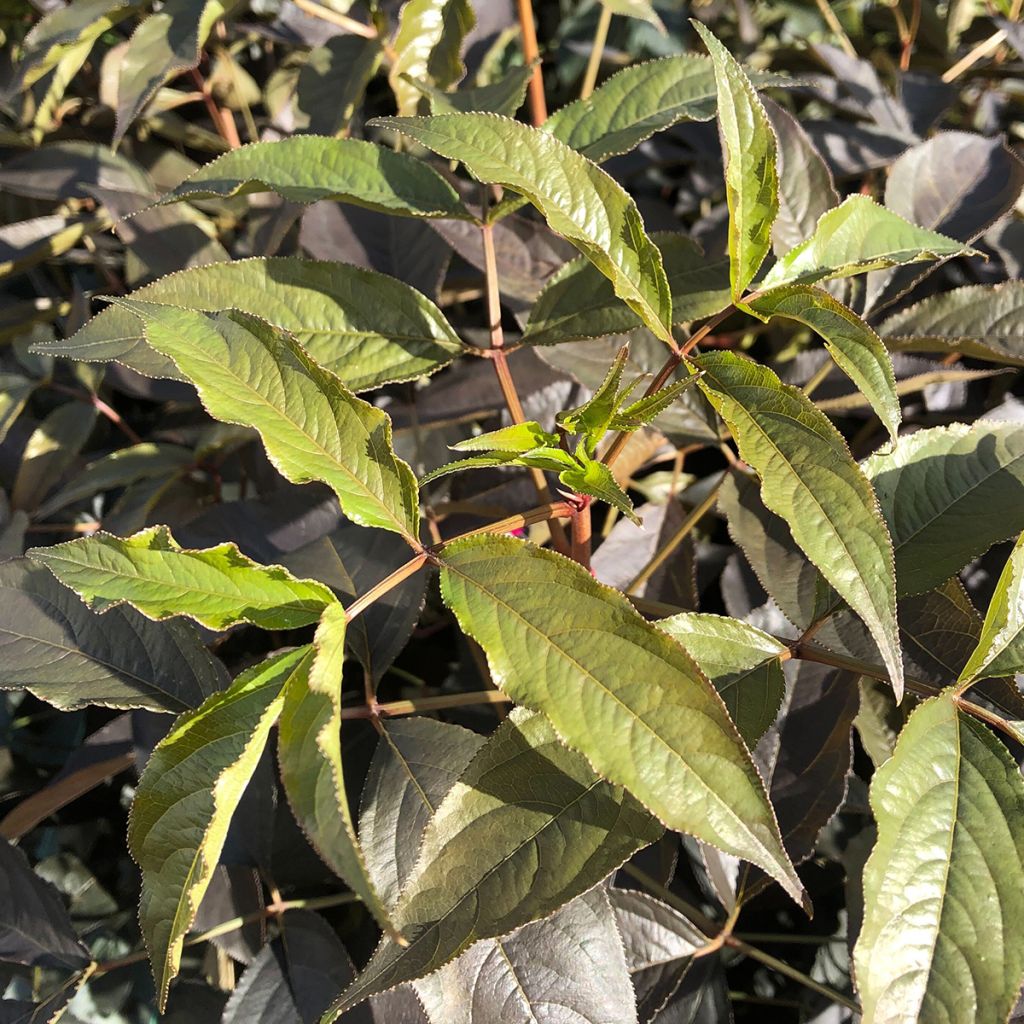

Staphylea colchica Black Beauty
Staphylea colchica Black Beauty
Staphylea colchica Black Beauty
Ivory-flowered Bladdernut, False Pistachio
I bought the beautiful bush at the Jardin des Plantes in Chantilly 2 years ago. I replanted it by mixing my sandy soil with planting compost and fertiliser. Placed in a semi-shaded area, it has struggled despite last year's rains and the intense heat. As gorgeous as it was when purchased, it has now become scrawny. Currently, a few buds are visible.
Jamaic, 16/12/2024
This item cannot be shipped to the selected country
Delivery charge from €5.90
More information
Schedule delivery date,
and select date in basket
This plant carries a 24 months recovery warranty
More information
We guarantee the quality of our plants for a full growing cycle, and will replace at our expense any plant that fails to recover under normal climatic and planting conditions.
From €5.90 for pickup delivery and €6.90 for home delivery
Express home delivery from €8.90.

Does this plant fit my garden?
Set up your Plantfit profile →
Description
Staphylea colchica Black Beauty is a variety of false pistachio that stands out for its glossy foliage coloured in chocolate purple. If the classic Staphylea colchica is already a remarkable and very accommodating shrub, 'Black Beauty' surpasses it with the beautiful contrast it offers between the dark colour of its vegetation and its white blooms. Its spring flowering in large deliciously scented panicles is followed by curious swollen fruits that remain decorative until winter. This false pistachio earns its rightful place in a country-style hedge, a large wild grove, or the garden of a collector keen to leave room for nature.
The False Pistachio is a shrub of the Staphyleaceae family, composed of the only 11 species belonging to the genus Staphylea. All these shrubs are native to the moist undergrowth of the temperate northern hemisphere. Staphylea colchica is native to a Georgian region south of the Caucasus called Colchis. The cultivar 'Black Beauty' is a recent horticultural creation.
The growth of Staphylea Black Beauty is fast, reaching approximately 3.25 m (11ft) in all directions in a few years, forming a small tree with a bushy and wide habit. Its bark is quite decorative, with whitish stripes, and the young shoots are of a beautiful russet hue. The plant blooms in April-May. At the end of its branches, clusters of pendulous bells appear with a subtle fragrance of almond and orange blossom. The flowering will be more abundant after a hot summer. These campanulate corollas, measuring 9 to 12 mm (1in) in length, are composed of 5 petals of a pearly white colour, slightly shiny. They are followed by the formation of pendulous fruits in the shape of membranous and swollen capsules, resembling small wineskins, with two or three "horns", evoking goat udders. Greenish-white in colour, these capsules turn brown as they ripen. They persist on the branches long after the leaves have fallen. The deciduous foliage is composed of opposite leaves, divided into 3 to 5 ovate to lanceolate leaflets, finely toothed along the edges. They emerge green in colour, then gradually turn bronze, purplish-violet to brownish. Their colour then turns yellow and orange at the end of the season, before falling.
Perfectly adapted to our continental and cold climates, Staphylea colchica Black Beauty is perfectly hardy and tolerates all types of soil as long as it does not dry out too much in summer. Its wild shrub appearance makes it suitable for rural settings and natural areas of the garden. In an informal hedge, at the boundaries of the garden, it can accompany e.g. rowan trees, hazel trees, medlars, hawthorns, elderberries, or even field maples with their beautiful autumn colours. To further enhance this ensemble, include some white spireas (arguta, Van Houttei), lilacs, mock oranges, botanical roses (Rosa hugonis, complicata, moyesii, pteracantha), and viburnums (lantana, carlesii, rhytidophyllum), or a caragana arborescens - all of which are equally robust and easy-to-grow shrubs.
In Georgia the flower buds, with a taste similar to capers, are preserved in vinegar. Inside the fruits are small seeds the size of a pea. When roasted, these seeds have a flavour reminiscent of pistachio or almond.
Report an error about the product description
Staphylea colchica Black Beauty in pictures
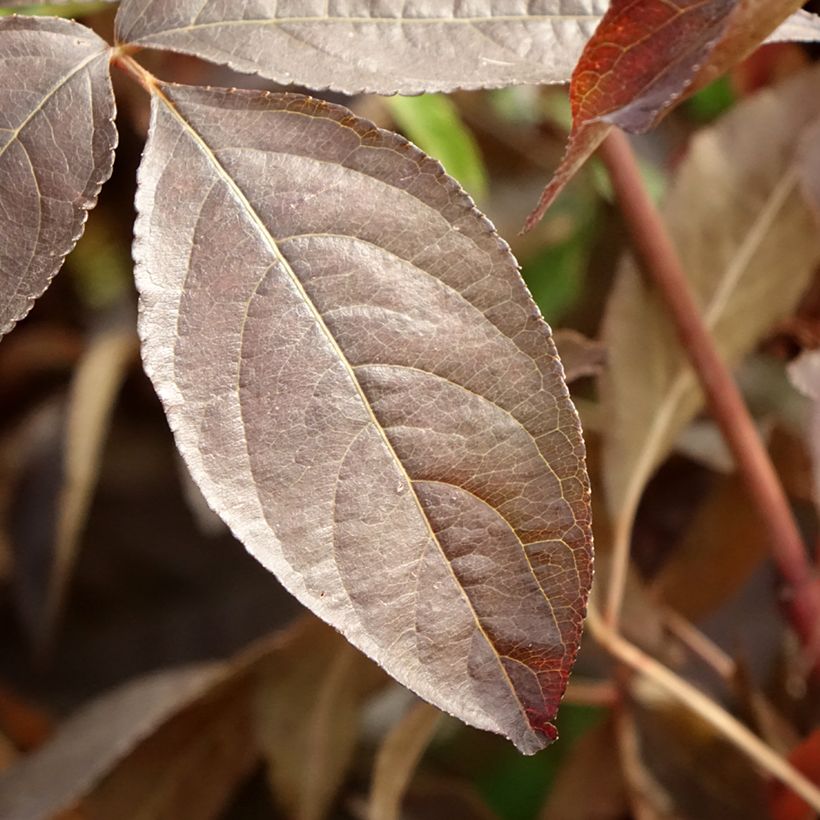

Plant habit
Flowering
Foliage
Botanical data
Staphylea
colchica
Black Beauty
Staphyleaceae
Ivory-flowered Bladdernut, False Pistachio
Cultivar or hybrid
Other Staphylea
Planting and care
Plant your Staphylea colchica Black Beauty in a sunny or partially shaded site, enriching the planting hole with some well-rotted compost. This bush adapts to a wide range of soils as long as they are fairly deep, relatively well-drained, and not too dry in summer. Its hardiness allows it to be grown in all regions. Pruning should be done in summer, after flowering. Remove dead wood and branches that are growing towards the centre or crossing over each other. Maintain a balanced shape but never prune large branches. This bush does not require extensive pruning.
Planting period
Intended location
Care
-
, onOrder confirmed
Reply from on Promesse de fleurs
Spring-flowering shrubs
Haven't found what you were looking for?
Hardiness is the lowest winter temperature a plant can endure without suffering serious damage or even dying. However, hardiness is affected by location (a sheltered area, such as a patio), protection (winter cover) and soil type (hardiness is improved by well-drained soil).

Photo Sharing Terms & Conditions
In order to encourage gardeners to interact and share their experiences, Promesse de fleurs offers various media enabling content to be uploaded onto its Site - in particular via the ‘Photo sharing’ module.
The User agrees to refrain from:
- Posting any content that is illegal, prejudicial, insulting, racist, inciteful to hatred, revisionist, contrary to public decency, that infringes on privacy or on the privacy rights of third parties, in particular the publicity rights of persons and goods, intellectual property rights, or the right to privacy.
- Submitting content on behalf of a third party;
- Impersonate the identity of a third party and/or publish any personal information about a third party;
In general, the User undertakes to refrain from any unethical behaviour.
All Content (in particular text, comments, files, images, photos, videos, creative works, etc.), which may be subject to property or intellectual property rights, image or other private rights, shall remain the property of the User, subject to the limited rights granted by the terms of the licence granted by Promesse de fleurs as stated below. Users are at liberty to publish or not to publish such Content on the Site, notably via the ‘Photo Sharing’ facility, and accept that this Content shall be made public and freely accessible, notably on the Internet.
Users further acknowledge, undertake to have ,and guarantee that they hold all necessary rights and permissions to publish such material on the Site, in particular with regard to the legislation in force pertaining to any privacy, property, intellectual property, image, or contractual rights, or rights of any other nature. By publishing such Content on the Site, Users acknowledge accepting full liability as publishers of the Content within the meaning of the law, and grant Promesse de fleurs, free of charge, an inclusive, worldwide licence for the said Content for the entire duration of its publication, including all reproduction, representation, up/downloading, displaying, performing, transmission, and storage rights.
Users also grant permission for their name to be linked to the Content and accept that this link may not always be made available.
By engaging in posting material, Users consent to their Content becoming automatically accessible on the Internet, in particular on other sites and/or blogs and/or web pages of the Promesse de fleurs site, including in particular social pages and the Promesse de fleurs catalogue.
Users may secure the removal of entrusted content free of charge by issuing a simple request via our contact form.
The flowering period indicated on our website applies to countries and regions located in USDA zone 8 (France, the United Kingdom, Ireland, the Netherlands, etc.)
It will vary according to where you live:
- In zones 9 to 10 (Italy, Spain, Greece, etc.), flowering will occur about 2 to 4 weeks earlier.
- In zones 6 to 7 (Germany, Poland, Slovenia, and lower mountainous regions), flowering will be delayed by 2 to 3 weeks.
- In zone 5 (Central Europe, Scandinavia), blooming will be delayed by 3 to 5 weeks.
In temperate climates, pruning of spring-flowering shrubs (forsythia, spireas, etc.) should be done just after flowering.
Pruning of summer-flowering shrubs (Indian Lilac, Perovskia, etc.) can be done in winter or spring.
In cold regions as well as with frost-sensitive plants, avoid pruning too early when severe frosts may still occur.
The planting period indicated on our website applies to countries and regions located in USDA zone 8 (France, United Kingdom, Ireland, Netherlands).
It will vary according to where you live:
- In Mediterranean zones (Marseille, Madrid, Milan, etc.), autumn and winter are the best planting periods.
- In continental zones (Strasbourg, Munich, Vienna, etc.), delay planting by 2 to 3 weeks in spring and bring it forward by 2 to 4 weeks in autumn.
- In mountainous regions (the Alps, Pyrenees, Carpathians, etc.), it is best to plant in late spring (May-June) or late summer (August-September).
The harvesting period indicated on our website applies to countries and regions in USDA zone 8 (France, England, Ireland, the Netherlands).
In colder areas (Scandinavia, Poland, Austria...) fruit and vegetable harvests are likely to be delayed by 3-4 weeks.
In warmer areas (Italy, Spain, Greece, etc.), harvesting will probably take place earlier, depending on weather conditions.
The sowing periods indicated on our website apply to countries and regions within USDA Zone 8 (France, UK, Ireland, Netherlands).
In colder areas (Scandinavia, Poland, Austria...), delay any outdoor sowing by 3-4 weeks, or sow under glass.
In warmer climes (Italy, Spain, Greece, etc.), bring outdoor sowing forward by a few weeks.

































